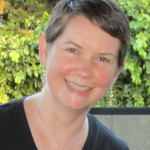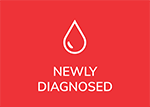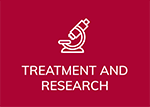
By Erin Michaela Sweeney – Patient
On February 10, 2011, with one phone call I became a thirty-nine-year-old terminal cancer patient. The hematologist said I had Acute Lymphoblastic Leukemia (ALL), a rare and aggressive blood cancer in adults that, without treatment, usually kills patients in weeks. He went on to say I would need a Bone Marrow Transplant (BMT) once hospital-administered chemotherapy got me into remission. Without a BMT, I would run out of chemo rounds, relapse, and die, leaving behind my then-husband, Jonathan, as well as my twelve-month-old baby boy, Eliott.
I soon found out there are three main types of BMTs: syngeneic (the marrow comes from an identical twin), autologous (the hematologist-oncologist uses the patient’s own marrow), and allogeneic (either a family member or someone unrelated donates marrow). I’ve no twin, and with my type of leukemia running rampant throughout my bloodstream, an autologous BMT was out of the question. So my physician tested my sibling and mother to see whether either matched. Unfortunately, they did not. I relied on the care team at City of Hope in Duarte, California, to get me into remission and find a donor through Be the Match, operated by the National Marrow Donor Program, a nonprofit dedicated to helping every patient get the life-saving BMT he or she needs.
By the end of May, I was in remission. At that point, the care team had expanded its donor search internationally. I had to bide my time.
***
As I prepared myself mentally and emotionally for another round of chemo, for more time away from my family, for more poison to wreak havoc on my body and brain, I had another clinic visit Thursday, June 2, 2011.
At clinic, my hematologist-oncologist at City of Hope, Dr. Anthony Stein, ran through all the typical check-up procedures. He looked in my mouth for open sores, listened to my heart and lungs, checked for edema, and palpated my stomach. Unlike any other time, he asked me to wait in the clinic room for a moment as Jonathan went out to schedule the next appointment.
Dr. Stein returned to the room with my folder in hand. A bit of a smile edged onto the side of his mouth. He came to share that the team had found me a donor! Oh, and what a match: an 11 out of 12, which exceeded their expectations of only a 10 out of 10. I did a little Snoopy dance and had the widest, stupidest grin on my face. I was speechlessly happy.
After Dr. Stein shared the good news with my husband (who had returned in the interim), I asked whether I had to go through another round of chemo. The answer, of course, was yes. The chemo round would help to keep me in remission. The difference? It would be the last round needed—assuming I stayed in remission—before my BMT.
Everything seemed brighter, better, more in focus— even with chemo brain—once I knew I would have the life-saving BMT. It was as if the eye doctor had been testing my eyesight with the lenses, and, with a flick of the wrist, everything was clearer. I would live beyond the potential of eight rounds of chemo. I might live long enough to see my baby grow up to be a man; that is, if my body did not reject the BMT. Two percent of transplants at City of Hope do not take—one in fifty patients do not have successful BMTs. What made that statistic so real for me was that a family friend with CLL, Brian, had a BMT at City of Hope in 2008, and it did not work. Would I be one of the lucky forty-nine?
***
BMTs come in three flavors: bone marrow, stem cell, and umbilical cord. The umbilical cord of a newborn holds the life force of stem cells—the type of cells that can migrate anywhere in the body and turn into any sort of cell. Dr. Stein was not so interested in giving me an umbilical cord transplant because it can take longer for the patient’s body to integrate the cells into the marrow to produce all the elements of blood.
Then there’s bone marrow and stem-cell transplants, which really have to do with the difference in harvesting. Bone marrow comes from deep in the pelvis of the donor—the actual marrow—whereas stem-cell material is filtered out of the blood of the donor. Stem-cell donation is much less invasive and painful for the donor, and about 75 percent of BMTs are actually stem-cell transplants. Because bone marrow donation came first, the procedure got the BMT nickname regardless of the harvesting method. Either way, the harvested material usually somehow knows to go to the patient’s bones to begin to transform into marrow cells to produce all the elements of blood. Pretty magical.
***
On Saturday, July 9, I wrote on CaringBridge—a nonprofit bringing people together during a health event via free websites—about the protocols leading up to my BMT:
I return to City of Hope Monday for outpatient appointments starting at 9:00 a.m., when a specialized nurse will insert the peripherally inserted central catheter (PICC) line that will be used to infuse the donor stem cells July 21—my fortieth birthday. Appointments should conclude around 3:30 p.m., at which point my hospital room should be ready. I then get cozy for a stay of about five or six weeks (barring complications).
Tuesday through Friday, I will receive radiation treatments three times a day (only two times on Friday) for a total of eleven treatments. I’m receiving radiation to knock out any hidden leukemia and to strip down my immune system in preparation for the BMT. The doctors have cautioned that I will probably become quite fatigued by days three and four (Thursday and Friday) and that I might end up with a sore mouth and throat. And not to be shy about asking for antinausea medication.
Saturday and Sunday I will receive chemo, which will do more of the same as the radiation, just in a different formulation. More sore mouth and throat, more fatigue, etc.
Monday through Wednesday (July 18–20), I will start my two antirejection medications.
I will receive my donor’s stem cells on Thursday, July 21.
Then I hang out at the hospital for another month or so, waiting to see how well my body accepts the stem cells and making sure I don’t get an infection, since the radiation and chemo will have made me immunocompromised (compromised my immune system).
***
At City of Hope, my team began a countdown to my BMT. The day I entered the hospital— Monday, July 11—was considered “Day -10.” Tuesday, when I began radiation treatments, was “Day -9,” and so on, until the day of BMT, “Day 0”: blast off.
The procedures and protocols to get me to Day 0 were routine for my care team and totally bizarre for me. I would have to experience these things to understand them. Until then, “Days -10 to 0” would remain just a schedule of things to do.
***
DAY -9, again from CaringBridge:
Made it through the first three radiation treatments, with eight more to go over the rest of the week. So far, I’m just tired and headachy after the treatments, which involve my standing on a platform in a harness, grasping handholds with shoulder rests reminding me not to lean this way or that. During the approximately fifteen minutes, I repeat to myself that the radiation is knocking out the last of any lurking leukemia and that it is preparing my body to accept the stem-cell transplant. This dual mantra has kept me upright in the weird sort of tadasana (mountain pose), steady and even on both feet, while the red lights glow and the loud, high-pitched warning siren wails during the radiation dosing. Seeing family and friends this evening after the treatments reminded me why I’m going through all of this.
When enduring total body radiation, I learned that I was stronger and tougher than I knew by relying on my inner strength as well as outside support from family and friends. I was able to make it through that part of the conditioning for my BMT. From my experience as well as others, I gained better insight into who I am and what I’m made of. I discovered a resilience deep down inside that I never knew I had. That resilience got me through the hell of eleven rounds of radiation.
DAY -8:
Made it through the three rounds of radiation today. As Dr. Stein reminded me earlier this evening, I’m half way done with the treatments. New side-effects: sore jaw, swollen glands near the jaw (in front of the ears), and a prickly feeling on the torso during and after the final treatment today. Though it was wonderful to see family and friends, it’s now clear to me that I’ve got limited energy and must schedule more napping time. When the fatigue hits, it hits hard, with a wallop. My nurse today was great about letting me know that all this is normal, that everyone goes through good and bad days and hours in the day; she made me feel that I have permission to sleep away half the day if I need. And my wonderful husband got here early today with our baby boy for a visit when I was fresh, then returned when I was a mess after the final treatment of the day and stayed later than planned to make sure I was feeling even again. Tomorrow I will pace myself better and make it through another three treatments. Now it’s time for me to rest.
Total body radiation is not for the weak of heart, literally and figuratively. While it destroyed the leukemic cells in my bone marrow, it also sucked some of the life force out of me. As the radiation zapped the cancer out of my blood, it left me in tatters.
It is hard to describe how physically ravaged I was after the radiation conditioning. My limbs felt like lead, and my head would loll to the side atop the hospital pillows. To type on the iPad screen took Herculean strength.
To get nuked from tip to tail, having my entire digestive system wiped out seemed mean and spiteful for my care team to do to me, even if it was protocol to try to save my life. The effects of destroying my digestive tract would lead to receiving nutrition and hydration through my PICC line, because I had no desire to eat or drink, as well as to having persistent diarrhea.
I staggered from one corner of my mind to another in the hopes of finding something to hold onto. I felt unmoored by the intense fatigue to such an extent that I would become confused and weepy. Finally, I would curl up in a fetal position to sleep the sleep of the dead—until the next interruption.
DAY -6:
A good day: finished radiation and received a medal as a distinguished patient! (Everyone who completes radiation receives one, but it was still nice to get.) Took several naps, had some nice joking time with my husband, and now I’ll be able to head to sleep around 9:00 p.m. Tomorrow morning I start two days of chemotherapy. Anticipated side-effects, according to Dr. Stein, include nausea, vomiting, jaw pain, and hiccups. I just hope it’s not all at the same time.
We’ve all had good days. How many people consider a two-dose total body radiation treatment day to be one of them? Going through seemingly life-killing conditioning meant standing before the kind of radiation equivalent to a nuclear bomb. If that’s good, I guess it’s all in one’s perspective.
I was at the right place at the right time in history. BMTs were developed in the 1960s, through trial and error. The type I had, a matched unrelated donor (MUD) BMT came about in the early 1970s. And the first ones were nasty endeavors with dismal outcomes. It’s only been since the 1990s that MUD BMTs have become quite successful in the category of survival rates—but the endeavor is still a beast.
It’s amazing to realize that MUD BMTs are younger than I am. I was born in the right era to have acute leukemia. Thank goodness for medical advancements. Perhaps at some point in the future, those with my diagnosis will not need to have the radiation, chemo, and BMT to eradicate their disease. I do hope that the medical researchers, those dreamers of things not yet possible, come up with something less destructive.
DAY -4:
I made it through the second, and final, day of chemo. By not eating anything until about 2:30 p.m., I avoided most side-effects, except the hiccups, which were more funny than anything. Overnight, they’ll start me on the first of two antirejection medicines, which I will be on twenty-three hours a day. The other medicine I will take by mouth, I believe once a day. That will be my regimen until Transplant Day, this Thursday, July 21, which, as many of you know, is also my real birthday (the big 4-0).
Having the hiccups—how completely insane and normal at the same time. What a funny side-effect from a medication. We humans have hiccups, a spasm of the diaphragm, from before we are born until we die. I wonder when my last hiccup might be.
As our bodies weaken, whether through modern medicine or aging, our minds begin to wander. With these travels, we devise new ways to see and interpret the world around us and, especially, within us. Our big, broad outer world shrinks down to just a dust mote floating by in a ray of sunshine. This transformation is magical. Our minds expand as our bodies contract, pulling away from pain and mentally moving toward lightness and freedom. Sometimes a simple joke frees us from the physical hardship we must endure. Tell a joke, watch her crack a smile. For an instant, the person is swept away on the notes of a waltz, far away from the agony of her innards being stripped down literally to the bone, to only later be rebuilt from the scratch of another person.
The BMT was a rather boring procedure, especially after the drama of total body radiation and high-dose chemo. My nurse got the call that the stem cells were ready. She went to the other side of campus to pick them up. When she got back forty-five minutes later, she administered them via my PICC line just like a blood transfusion. Yet it was a transfusion of life. That life-saving serum took less than twenty minutes to enter my system.
What a surreal way to celebrate my fortieth birthday. I wasn’t eating or drinking anything, much less toasting in a new decade of my life. Yet I was still alive to breathe another breath.
After the nurse administered the stem cells, then the waiting began. Would my body incorporate the stem-cell donation or reject it? If the donation seemed too much like my own bone marrow, the BMT would be a failure. It could also fail if the stem cells were considered invaders by my own body. Would my bone marrow accept the matched unrelated donor’s stem cells? That is, would I, as the host, allow the stem cells to engraft? If so, I would become a person with a new blood type and immune system. Time to sit back to wait and see.
DAY +1:
Well, the first day of the rest of my life unfolded thusly: lots of naps! I’m still very tuckered from receiving the stem cells. And my white blood cell count numbers are down, from the radiation and chemo (to be expected), which also contributes to my fatigue. Once the stem cells engraft, meaning they start to take over the work of the bone marrow production, my numbers will go up, I’ll feel stronger, and once I hit 1.0 white blood cell count, I’ll be able to see Eliott again. That 1.0 mark will probably take place in ten to fifteen days. Can’t wait!
In February 2011, Erin Michaela Sweeney was diagnosed with ALL. She is now a writer, mommy, yogini, daughter, editor, sister, and napper extraordinaire who lives in Claremont, California. This story is an adapted excerpt from her memoir, Every Breath Is a Gift: Reflections on My Leukemia Journey. For every book sold, it’s still good to be alive press will donate $1 profit to Be the Match. For more information, please go to www.ErinMichaelaSweeney.com or email to [email protected].
Originally published in The CLL Tribune Q3 2015.

















